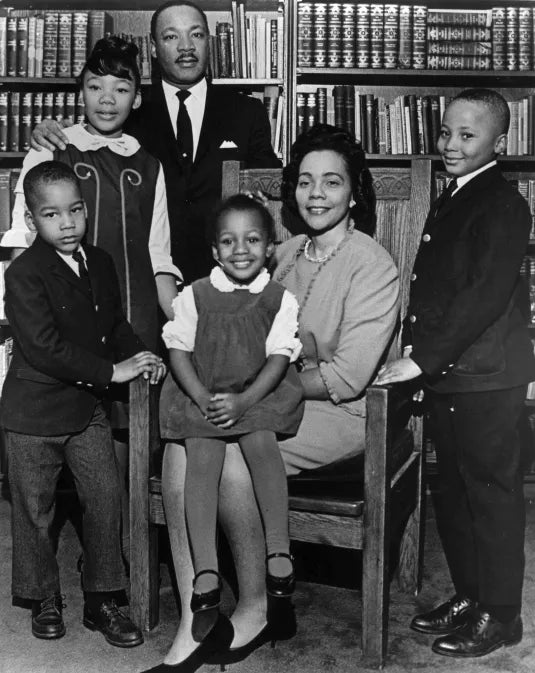
Talking to Younger Kids About Martin Luther King Jr. Day
Share
Martin Luther King Jr. Day is a wonderful opportunity to teach young children about kindness, fairness, and the importance of treating everyone with respect. For kids under 9, it’s all about keeping the conversation simple, relatable, and empowering. Here’s how you can approach this important topic in a way they can easily understand.
Start With What They Know
Begin by asking your child what they know about Martin Luther King Jr. or fairness in general. Kids are naturally curious and often have questions or stories to share about their experiences. For example, you might say, “Have you ever felt like something wasn’t fair? How did that make you feel?” Connecting MLK’s message to something they’ve experienced helps them understand his legacy on a personal level.
Tell a Story They Can Relate To
Share a simplified version of MLK’s story. Explain that he was a leader who wanted everyone to be treated equally and believed in solving problems peacefully. You might say:
“Martin Luther King Jr. wanted all kids to be able to play together, go to the same schools, and have the same opportunities. A long time ago, some people weren’t allowed to do things just because of the color of their skin. That wasn’t fair, and Martin worked hard to change that.”
Focus on Key Values
Use MLK Day to teach values like kindness, fairness, and standing up for what is right. Talk about how being kind and fair makes the world a better place for everyone. For example:
• Kindness: Encourage your child to think of ways they can be kind to everyone they meet.
• Fairness: Discuss why everyone deserves the same opportunities, like sitting wherever they want on the bus or playing at the same park.
• Standing Up for What’s Right: Share how MLK used peaceful words and actions to make changes, and explain how we can all do that in our own lives.
Make It Interactive
Kids learn best through activities, so use MLK Day to create meaningful experiences they can engage with.
• M&Ms Example: Grab a bag of M&Ms (or any colorful candy) and use it to explain diversity and unity. Hold up a handful of the candies and ask, “What do you see?” They’ll likely say the different colors. Then, take a bite and say, “Even though they look different on the outside, inside they’re all the same—and they’re all sweet! People are the same way. We might look different, but inside we all have feelings, dreams, and hopes, just like Martin Luther King Jr. believed.”
• Books and Stories: Read age-appropriate books about Martin Luther King Jr. or diversity. Books like Martin’s Big Words by Doreen Rappaport
Martin’s Big Words Read by Jeff Perry
or The Story of Martin Luther King Jr. by Johnny Ray Moore are great options.
The Story of Martin Luther King Jr Read Aloud
• Art and Crafts: Create a “dream board” where your child can draw or write their dreams for a kinder world.
Free color pages here
• Role Play: Act out scenarios where they can practice fairness and kindness, like including everyone in a game or helping a friend in need.
• Representation in Toys: Take a moment to assess the toys your children play with. Provide them with dolls, action figures, and toys of all races and colors, like Little People and Barbies. Representation in play helps children understand that everyone is equally important and valued. You can talk about how fun it is that their toys look different but can all play together, just like friends do.
Little people truck set
Little friends, Montessori puzzle
Answer Questions Honestly
Kids may have questions like, “Why were people treated unfairly?” or “Does that still happen today?” Answer these questions in an age-appropriate way. For example:
“A long time ago, some people thought they were better than others because of the color of their skin, but that was wrong. Martin Luther King Jr. helped show everyone that we are all equal, and many people worked together to change unfair rules. While some people still make unfair choices, most people know it’s important to treat everyone kindly and fairly.”
End With Hope
MLK’s message was about hope for a brighter future. Remind your child that they have the power to make a difference by being kind, fair, and brave. You might say, “Just like Martin Luther King Jr. dreamed of a world where everyone is treated equally, we can dream and work toward that too. It starts with how we treat each other every day.”
By teaching younger kids about Martin Luther King Jr. in a way they can understand, you’re not just honoring his legacy—you’re empowering the next generation to carry it forward.
